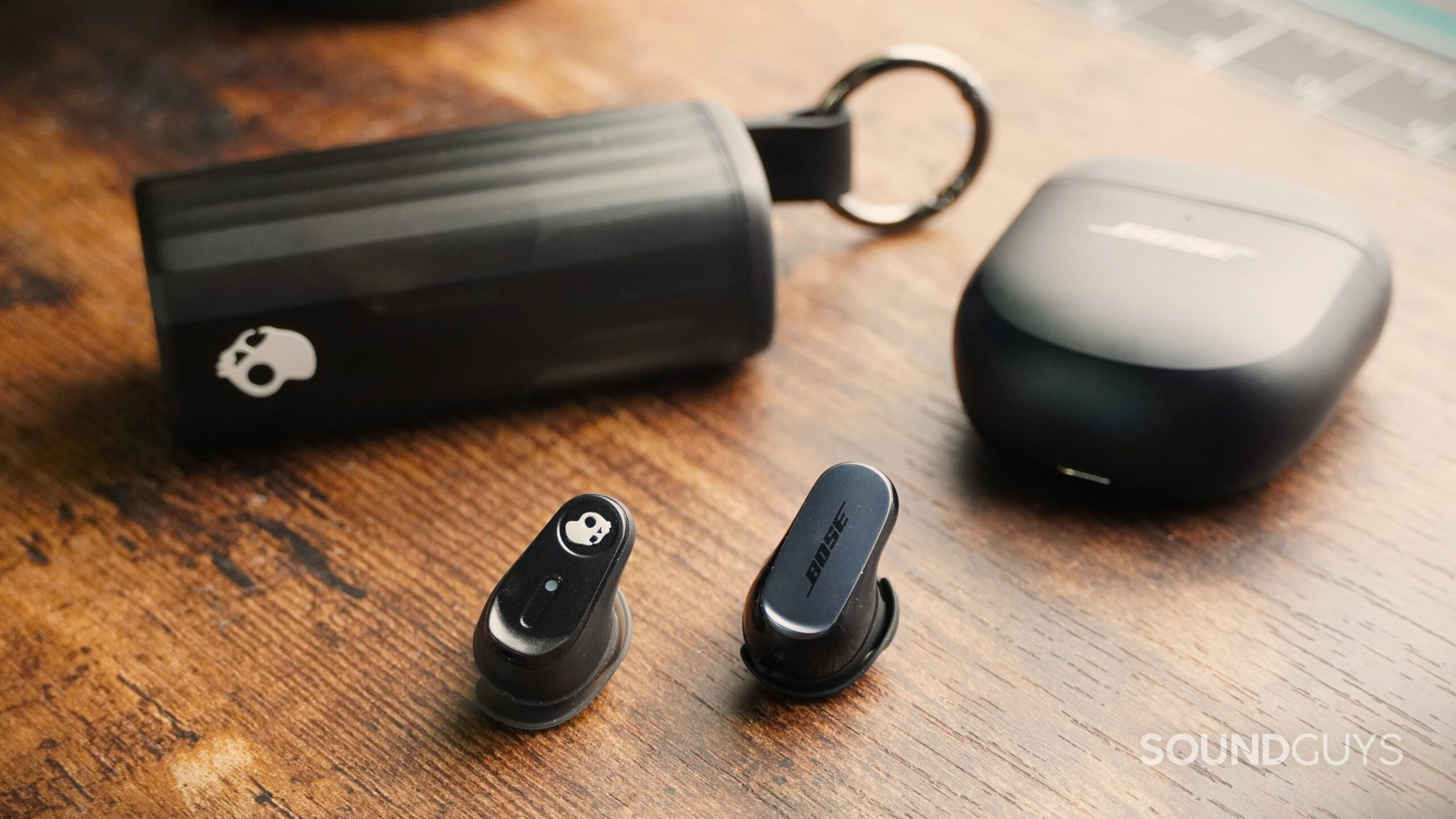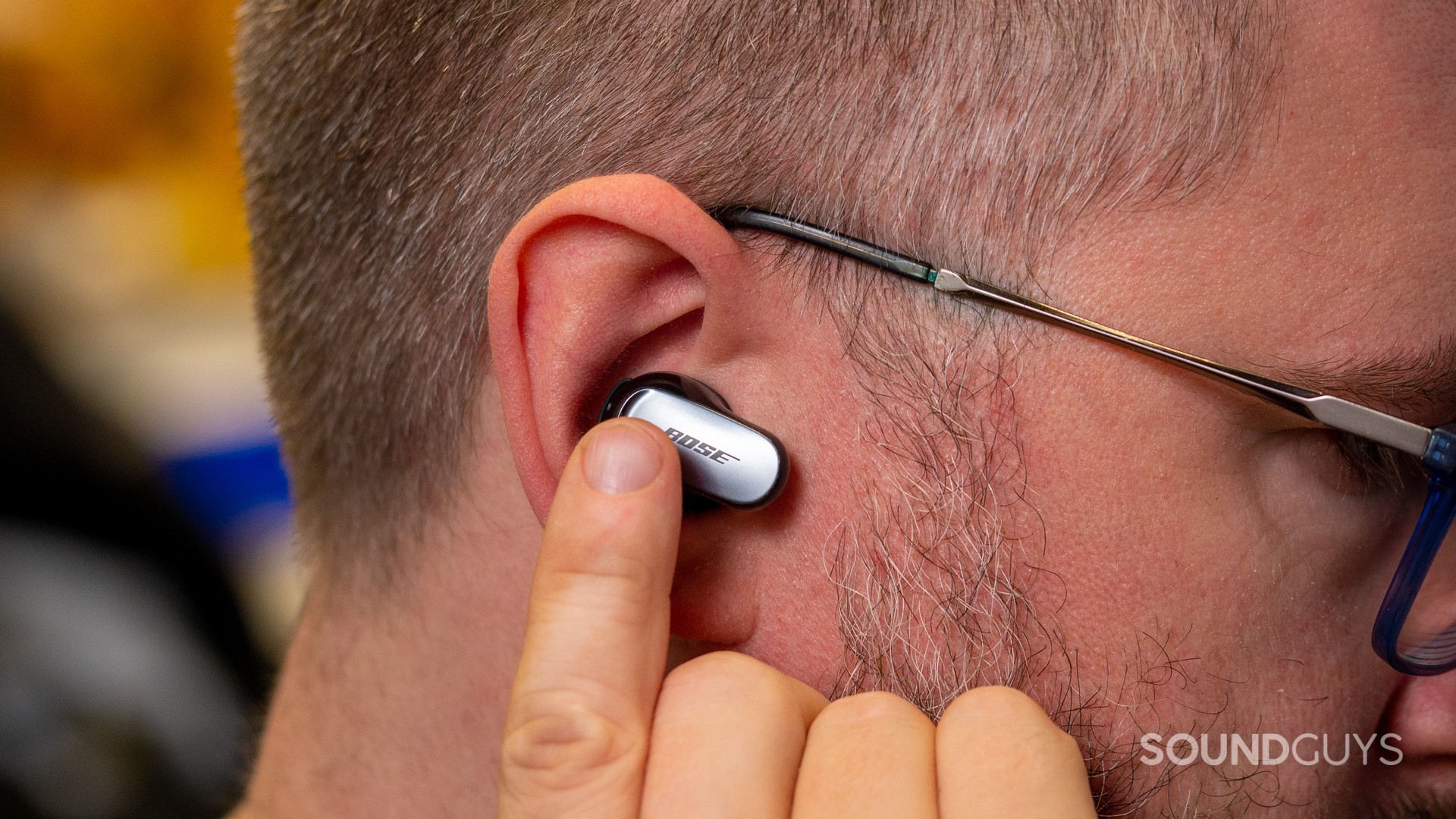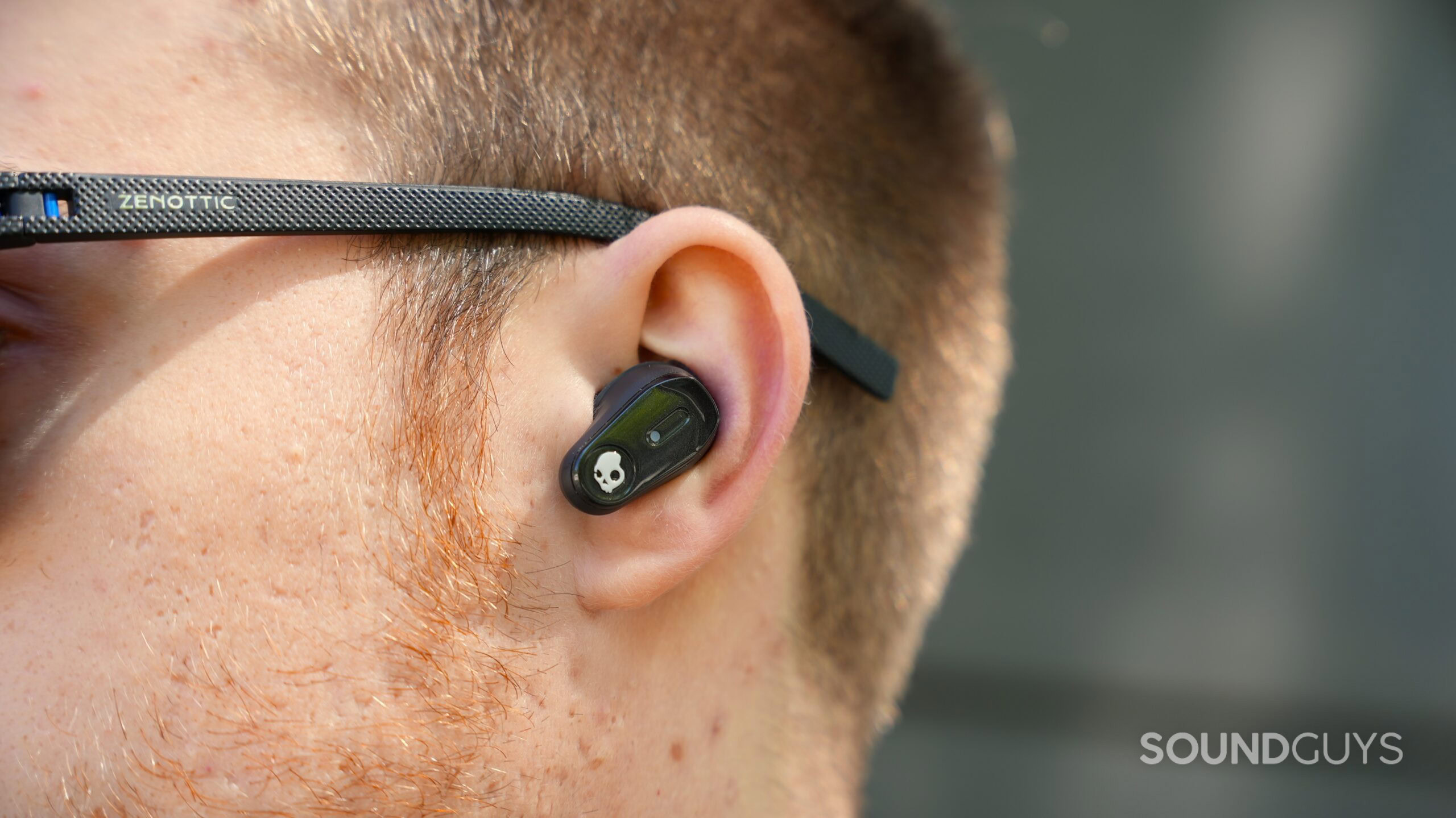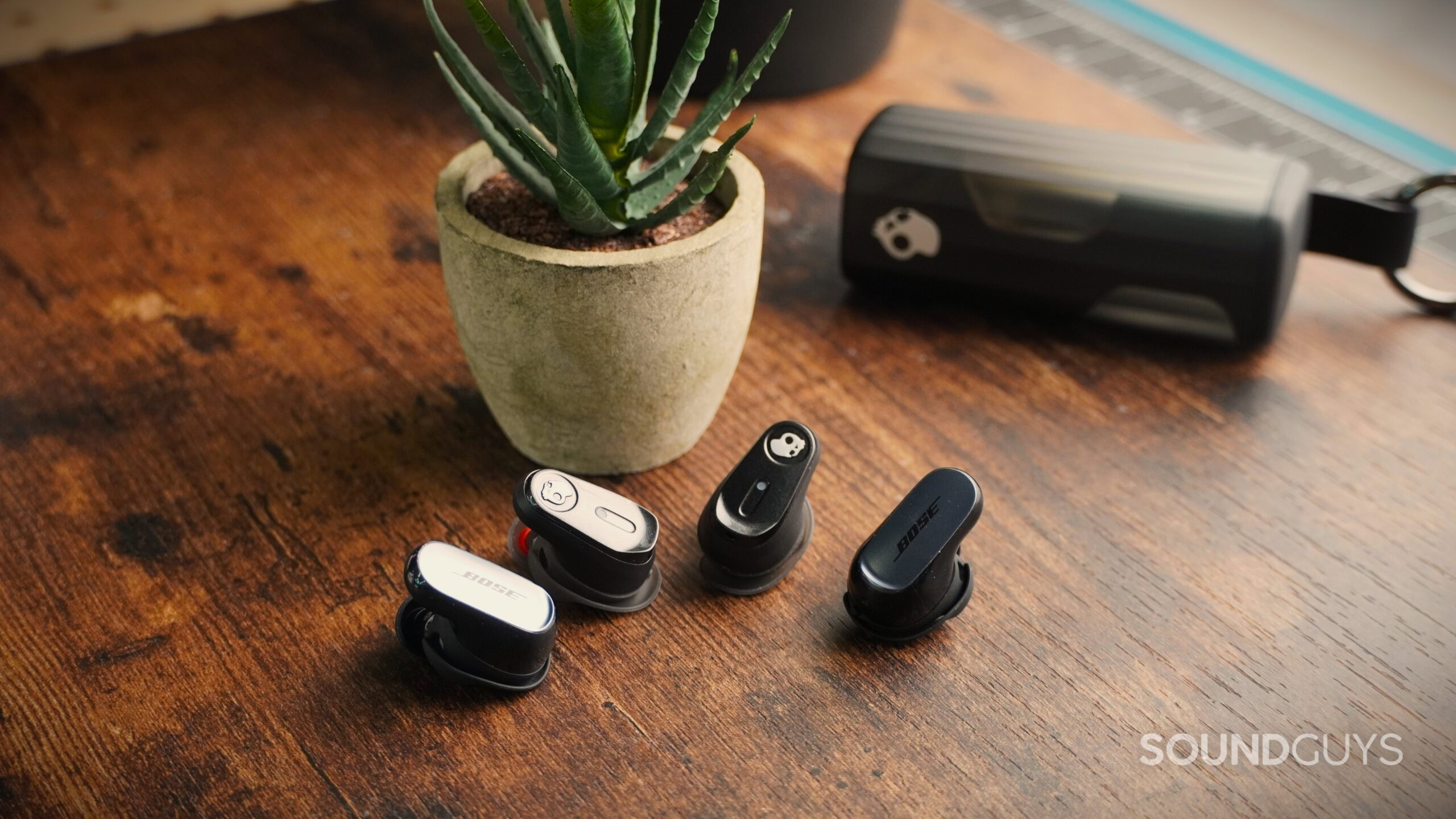All products featured are independently chosen by us. However, SoundGuys may receive a commission on orders placed through its retail links. See our ethics statement.
Skullcandy Method 360 ANC vs Bose QuietComfort Ultra Earbuds: Can budget beat Bose at its own game?
June 4, 2025



Bose is known for setting the benchmark in active noise canceling, while Skullcandy has long been the go-to for budget-friendly, bass-heavy earbuds. But when Skullcandy partnered with Bose for its Method 360 ANC earbuds, it promised “premium sound for the people.” So, how do these affordable earbuds compare to Bose’s top-tier QuietComfort Ultra? I tested both to find out.
This article was originally published on June 4, 2025, and this is the first version. Updates will follow.
What’s it like to use the Skullcandy Method 360 ANC compared to the Bose QuietComfort Ultra Earbuds?
The Skullcandy Method 360 ANC earbuds feel like déjà vu because they’re nearly identical to the Bose QuietComfort Ultra Earbuds in shape, size, and fit. That’s by design—Skullcandy essentially licensed the Bose blueprint, using the same drivers, acoustic tuning, and the exact ear tips and fins from the QC Ultra. The result is a fit that’s just as stable and secure as Bose’s flagship model. I had no trouble finding the right size combo, and once in place, the earbuds stayed put through workouts, commutes, and couch sessions alike. Even better, the touch controls respond reliably without disrupting the seal—something many cheaper earbuds struggle with.
The Method 360 ANC breaks away from the QC Ultra in materials and, most noticeably, the charging case. Bose opts for a more traditional, no-nonsense case with rounded edges and a matte finish. It feels solid, slides easily into a jeans pocket, and includes thoughtful features like LED indicators for both the earbuds and the case’s charge level. You get a physical pairing button on the back and a simple clamshell case that opens from the top.

Skullcandy, on the other hand, trades polish for personality. The Method 360 ANC case features a slider mechanism and integrated carabiner clip, clearly aimed at users who like to clip their gear to a backpack or belt loop. It’s eye-catching and adventurous—but not without drawbacks. The sliding mechanism lacks a firm locking system and started to loosen up after just a week of use. That’s a problem if you’re active, because any accidental bump could pop the case open and send your earbuds flying. Adding to the quirk factor, each earbud slots into a different side of the case upside down. This makes orientation obvious when the case is clipped to a bag, but confusing when it’s just sitting on a desk. It’s a bold design that sacrifices everyday practicality for style points.
| Input | Either Earbud |
|---|---|
Single Tap | Play/Pause Anwser Call |
Double Tap | Track Forward |
Triple Tap | ANC On Stay-Aware Mode On ANC Off |
1 Second Hold | End Call Reject Incoming Call Spotify Tap |
| Gesture | Playback function | Call function |
|---|---|---|
| Gesture Swipe up | Playback function Volume Up | Call function N/A |
| Gesture Swipe down | Playback function Volume Down | Call function N/A |
| Gesture Tap | Playback function Play / Pause | Call function Answer call / Answer second call |
| Gesture Double tap | Playback function Track Forward | Call function End / Reject call |
| Gesture Triple tap | Playback function Track backward | Call function N/A |
| Gesture Long tap | Playback function Mobile device control / User control preset | Call function N/A |
Do the Skullcandy Method 360 ANC or Bose QuietComfort Ultra Earbuds have more features?

Skullcandy offers an impressive feature set at its price, most notably the customizable 5-band EQ, adjustable ANC, and transparency levels, and Bluetooth multipoint support. The app itself is literally the reskinned Bose QuietComfort app, which feels like a bit of a shortcut but works well nonetheless. Bonus features like Spotify Tap and Studio Mode add to the appeal.
Bose’s features skew more toward future-proofing and sound quality. Snapdragon Sound with aptX Lossless gives it a significant edge for Hi-Res streaming, and the immersive audio mode, while not perfect, offers a spatial listening effect. However, the EQ options are limited to a 3-band setup, and I didn’t find it as effective at taming the overly emphasized bass and treble as Skullcandy’s app.
How do the Skullcandy Method 360 ANC and Bose QuietComfort Ultra Earbuds connect?
Both earbuds use Bluetooth 5.3, ensuring stable and modern wireless connections. The Skullcandy Method 360 ANC supports only AAC and SBC codecs, while Bose includes aptX Adaptive for higher resolution audio. Both earbuds also support Multipoint, which is a big win for multitaskers.
Pairing is straightforward for both. Skullcandy’s pairing process is manual but simple, while Bose benefits from Fast Pair for Android users. That extra convenience might seem minor but adds to the QC Ultra’s overall polish.
Is battery life better on the Skullcandy Method 360 ANC or the Bose QuietComfort Ultra Earbuds?

Skullcandy wins here. In our testing, the Method 360 ANC lasted 7 hours and 43 minutes with ANC on, extending to 11 hours with ANC off. Add the case, and you’re looking at 32–40 hours total. It also supports Rapid Charge, which gives 2 hours of use in just 10 minutes.
Bose’s battery life falls short in comparison. The QC Ultra Earbuds clocked in at just 6 hours and 11 minutes per charge. While that’s enough for a full workday, it doesn’t match Skullcandy’s endurance. Still, Bose compensates with a high-speed charging case that reliably tops off the buds between uses.
Do the Skullcandy Method 360 ANC or Bose QuietComfort Ultra Earbuds block noise better?
Regarding overall noise reduction, the Bose QuietComfort Ultra Earbuds clearly outperform the Skullcandy Method 360 ANC across nearly the entire frequency range. On this chart, every 10dB increase represents a halving of sound power, so even small differences translate to big shifts in real-world loudness. The QC Ultra delivers exceptional total attenuation—ANC plus passive isolation—cutting up to 34dB below 400Hz and peaking near 39dB above 1kHz. That’s around an 87–94% reduction in perceived volume, which makes them ideal for flights, offices, and busy commutes.
Loading chart ...
Skullcandy holds its own for the price, reaching around 28dB of attenuation at 80Hz and up to 35dB above 1kHz. That’s still strong—roughly an 85–90% reduction at peak—but not quite flagship-level. It’s most effective against higher-pitched sounds like keyboard clatter and voices. However, the Method 360 ANC doesn’t do as well with deeper rumbles, which means you’ll still hear engine noise and HVAC hum. Thanks to Bose-designed tips, its passive isolation is decent, but the lack of strong low-end attenuation without ANC means you’ll want noise canceling enabled in loud environments. Bose is still the best if you want the best all-around silence.
Do the Skullcandy Method 360 ANC sound better than the Bose QuietComfort Ultra Earbuds?
The answer depends on your taste. If you like bass—big, booming, sometimes overwhelming bass—Skullcandy delivers. Their sound is fun and powerful, especially for hip-hop or EDM. But the aggressive low-end muddies vocals and midrange instruments unless you tweak the EQ.
Bose also emphasizes bass and treble but does so with slightly more finesse. The midrange is still recessed, and cymbals can be shrill at high volumes, but the overall sound is cleaner out of the box. Still, the in-app EQ lacks the precision to fully correct these imbalances.
Multi-Dimensional Audio Quality Scores (MDAQS)
Skullcandy scores a remarkable 4.9 overall in MDAQS testing. Its Timbre and Immersiveness are equally high, though its Distortion rating of 3.1 hints at limitations in clarity. Bose scores a bit lower overall at 4.4, with a cleaner 2.2 Distortion rating but lower Immersiveness (3.9). If you want spacious sound and engaging Timbre, Skullcandy surprisingly pulls ahead. For technical cleanliness, Bose wins.
- Timbre (MOS-T) represents how faithfully the headphones reproduce the frequency spectrum and temporal resolution (timing information).
- Distortion (MOS-D) represents non-linearities and added noise: higher scores mean cleaner reproduction.
- Immersiveness (MOS-I) represents perceived source width and positioning: how well virtual sound sources are defined in three-dimensional space.
Objective Measurements
Loading chart ...
Skullcandy pushes bass and treble harder than Bose, resulting in a V-shaped curve that emphasizes lows and highs more than our house curve prefers. The QC Ultra has a similar shape but with more restrained boosts, especially in the sub-bass and bass regions. Both dip slightly in the mids, which can make vocals sound recessed. Neither tuning is ideal for critical listening, but Skullcandy’s sound is a bit more intense and exaggerated than Bose’s.
Do the Skullcandy Method 360 ANC or Bose QuietComfort Ultra Earbuds have a better microphone?

Skullcandy’s mic sounds noticeably processed, but gets the job done. It keeps speech intelligible and handles background noise well, though windy environments remain a challenge. It’s clear enough for calls but lacks richness and can sound thin.
Bose provides more natural-sounding audio but still falls into the “good enough” category for calls. Its microphones work better in noisy environments and manage a smoother tone overall. In direct comparison, I’d say Bose wins on clarity and noise handling, but neither is a standout.
Skullcandy Method 360 ANC microphone demo (Ideal conditions):
Bose QuietComfort Ultra Earbuds microphone demo (Ideal conditions):
Skullcandy Method 360 ANC microphone demo (Street conditions):
Bose QuietComfort Ultra Earbuds microphone demo (Street conditions):
Skullcandy Method 360 ANC vs Bose QuietComfort Ultra Earbuds: Price and availability
The Method 360 ANC launched at $129.99 but is often available for $99. That’s exceptional value considering the feature set and Bose involvement. It’s a clear standout in the sub-$150 bracket.
The Bose QuietComfort Ultra Earbuds retail for $299.99. You’re paying for better materials, more refined sound, and best-in-class ANC—but at three times the price. Sales may occasionally bring that down, but it’s still a premium product.
Should you get the Skullcandy Method 360 ANC or the Bose QuietComfort Ultra Earbuds?

If budget is your biggest concern, the Skullcandy Method 360 ANC punches well above its weight. You get solid ANC, tons of features, a customizable app, and decent comfort, all with Bose hardware under the hood. It’s the best value in Skullcandy’s lineup right now.
However, if you demand the best ANC, more balanced sound (with some EQ help), and longer-term durability, the Bose QuietComfort Ultra Earbuds remain the top choice. Just know that you’re paying a significant premium for modest gains. For most casual listeners, Skullcandy’s offering will be more than enough—and a lot more wallet-friendly.


Immersive audio
Customizable fit
Thank you for being part of our community. Read our Comment Policy before posting.